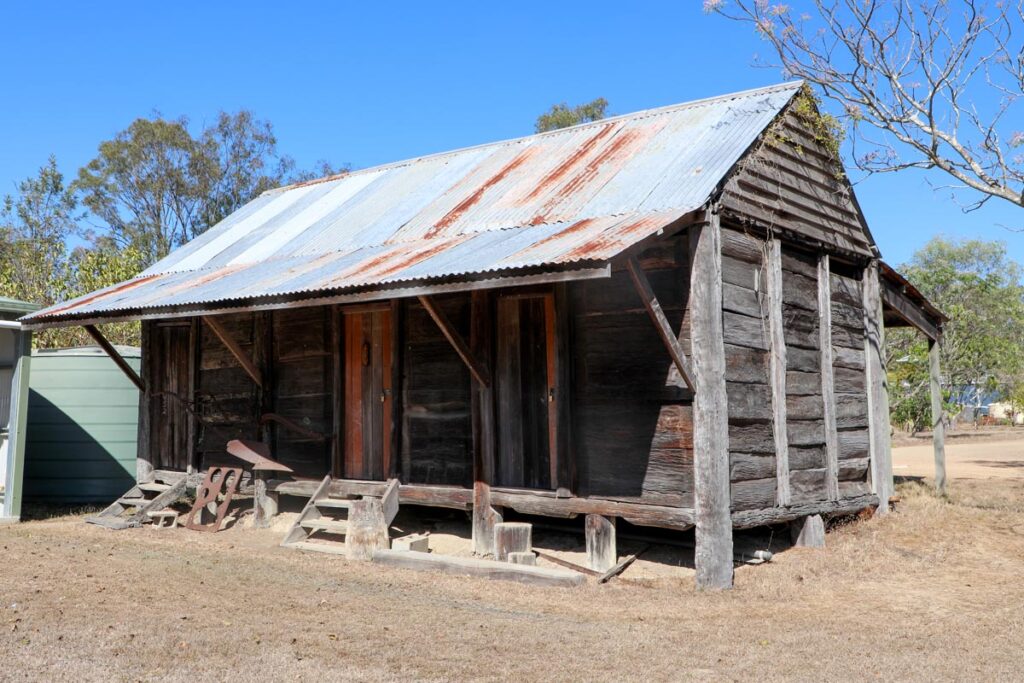
The Allen Brothers’ Slab Hut is a rare surviving example of a slab dwelling from the late nineteenth century to early twentieth century period of European settlement in the Gin Gin area.
The slab hut is a standing testament to the privations and difficulties of early farming in the region, and is listed among Bundaberg Regional Council’s Local Heritage Places.
The hut was understood to have been the living quarters of three brothers from the Allen family, who were a prominent farming family in the region from the late 1800s.
The first European settlement of the Gin Gin area occurred in 1848 when Tirroan pastoral station was established by Gregory Blaxland and William Forster as a sheep grazing property.
Further large pastoral runs were formed in the district, including Walla, Kolonga and Monduran, until the 1860s when successive Land Acts began to break up the stations to encourage closer settlement.
The discovery of copper in the west of the Gin Gin district in the late 1860s and early 1870s stimulated the establishment of the town, and the copper was transported to Bundaberg for loading onto ships in the Burnett River.
By the 1880s, the district’s pastoral stations had moved from sheep to cattle, the Gin Gin sugar mill was established in Wallaville and timber and dairy industries had developed.
William Allen migrated from England in 1862, married Sarah Jane Childs in 1874, and settled in the northwest outskirts of Gin Gin.
Together they had 13 children between 1875 and 1899, including the brothers believed to have lived in the hut, Ernest (1883), James Edward (1886) and Josiah (1890).
The three brothers joined the Australian Imperial Force in 1916 and fought in World War I on the Western Front.
Josiah and James were killed in the Battle of Messines in Belgium on 7 June 1917, and Ernest was killed in the Second Battle of Villers-Bretonneux in France on 25 April 1918.
There is a plaque in their memory in the Gin Gin cemetery beside the headstone of their mother Sarah, who turned the first soil for the Gin Gin war memorial in 1920 and passed away in 1925 aged 70.
The modesty of the Allen Brothers’ Slab Hut is an important reminder that financial success was not guaranteed for many early farming families who had to contend with harsh environmental factors and variability in markets for their produce.
The simple slab construction is set on low stumps, with a gabled roof made of short sheeted corrugated iron, an awning on the eastern side and a verandah on the western side.
The timbers of the hut walls are predominately the original hand split and dressed slabs of locally hewn timber, with some sympathetically replaced by sawn slabs at later dates.
The timbers of the awning and verandah appear to have been replaced at some stage in the dwelling’s history.
The hut is located within the Kookaburra Park Eco Village northeast of Gin Gin, which can be accessed from the Bundaberg-Gin Gin Road.





Who is the author of this article?
there was no Tirroan Pastoral Run. if you have the documented evidence, please do make this available to all. to suggest the Gazetted are wrong shows a gross misunderstanding of primary source documents.